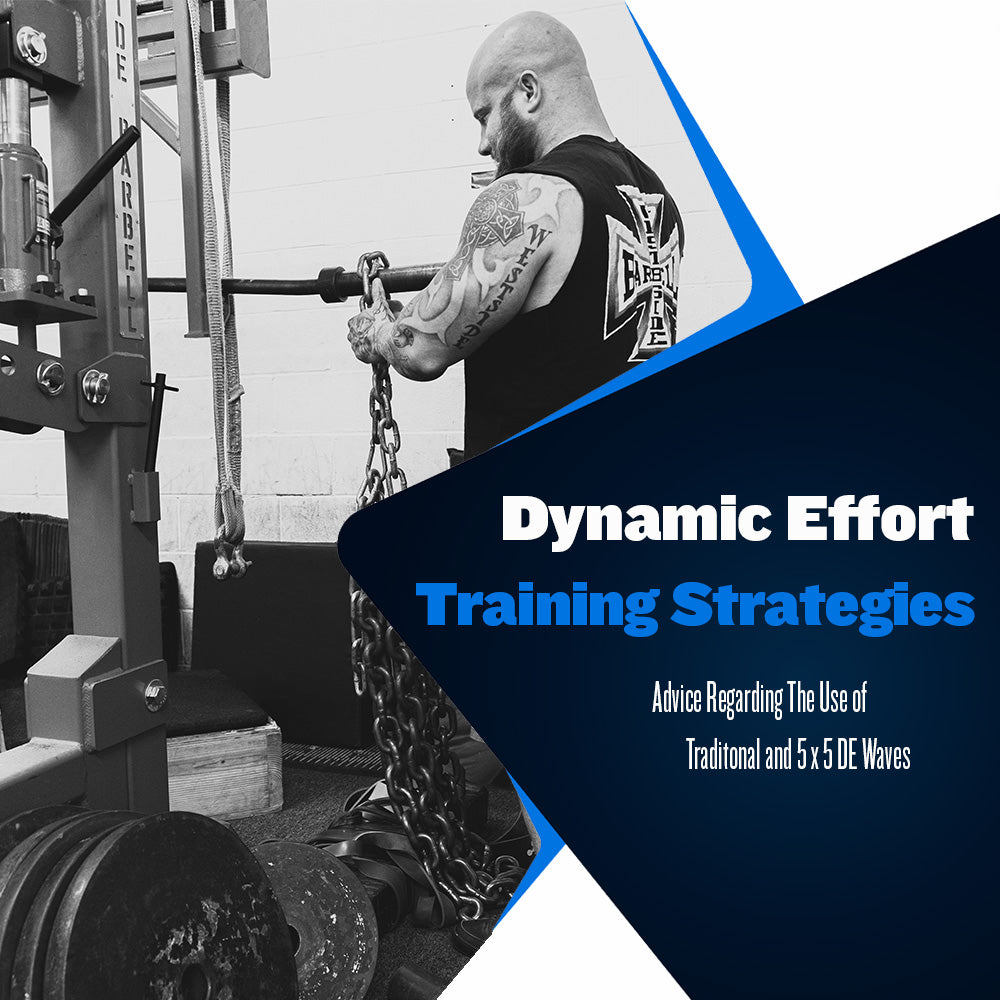Starting Conjugate: Dynamic Effort Training Strategies

At Westside, we use dynamic effort training to improve our rate of force development. This is achieved by lifting sub-maximal weights at maximal speed, resulting in improved bar speed and explosive strength. We train using this method twice weekly, one day dedicated to lower body training and another to upper body training.
At Westside, we will follow the traditional dynamic effort set and rep scheme as stated in the Westside Book of Methods, or we will utilize a 5 x 5 set and rep scheme.
Following the traditional approach, you will focus solely on improving force development rate, with multiple sets of 2-3 reps done at maximal speed. Following the 5 x 5 approach will improve force development rate, accumulate more volume, and improve strength endurance.
We understand that having these options can lead to confusion regarding when and why you should use each approach. Here are the basics regarding each approach and when to use them:
Traditional Dynamic Effort
This is the way we recommend athletes begin performing dynamic effort training. The traditional approach will provide the athlete with fewer reps per set and less overall volume, which makes it easier for the beginner to complete a workout while performing all reps at optimal bar speed.
If you immediately throw an athlete into a 5 x 5 set and rep scheme, which doesn’t scale back volume as intensity increases, you will overly fatigue that athlete. Following the traditional approach scales back the volume as intensity increases, allowing an athlete to learn how to move during a dynamic effort workout without having to deal with excessive fatigue.
Beginners should perform at least three complete three-week dynamic effort waves before thinking about changing up set and rep schemes. This should only be done if the athlete can perform dynamic effort reps at optimal speeds and has no issues recovering from dynamic effort workouts.
5 x 5 for Dynamic Effort Training
For the experienced intermediate or more advanced lifter, 5 x 5 is a great way to build explosive power, strength endurance, and increase muscle mass. So, if you are someone who is beginning a Conjugate Method program while already having built a strong base, you can start using 5 x 5 as soon as you can complete one traditional dynamic effort training wave correctly.
You must perform at least one traditional wave because you need to learn how to correctly produce the force required to achieve optimal bar speed for each rep of each set. Without the ability to do this, you render the dynamic effort training useless.
If you cannot complete an entire traditional wave correctly, continue following the traditional wave schedule until you raise your fitness level. For 5 x 5 to be maximally effective, it is important to have the fitness levels necessary to push each rep at what would be considered dynamic effort bar speed.
Once you have the fitness needed to execute 5 x 5 dynamic effort work properly, you can begin following the training schedule for intermediates listed below. We do this to ensure athletes do not overload themselves with too much initial dynamic effort training volume, considering three weeks of 5 x 5 is much more volume than the traditional approach.
Recommended Training Schedules
Here is the recommended DE training schedule for beginners:
Wave 1: Traditional DE
Wave 2: Traditional DE
Wave 3: Traditional DE
Wave 4: 5 x 5 (if performance prerequisites have been met)
Here is the recommended DE training schedule for intermediate athletes:
Wave 1: Traditional DE
Wave 2: Traditional DE
Wave 3: 5 x 5
Wave 4: Traditional DE
Here is the recommended DE training schedule for advanced athletes:
Wave 1: Traditional DE
Wave 2: 5 x 5
Wave 3: Traditional DE
Wave 4: 5 x 5
Remember that these are only suggestions as to how you can schedule training. Ultimately, you must make the best decisions for yourself or your athletes.
The basic idea is that beginners can use 5 x 5 when they’re capable, intermediates can use 5 x 5 to accumulate more volume, and advanced athletes can use either approach at any time, depending on the training benefits they are currently seeking.
Sources:
Simmons, L. (2007). Westside Barbell Book of Methods. Westside Barbell.
Verkhoshansky, Y., & Siff, M. C. (2009). Supertraining. Verkhoshansky.




